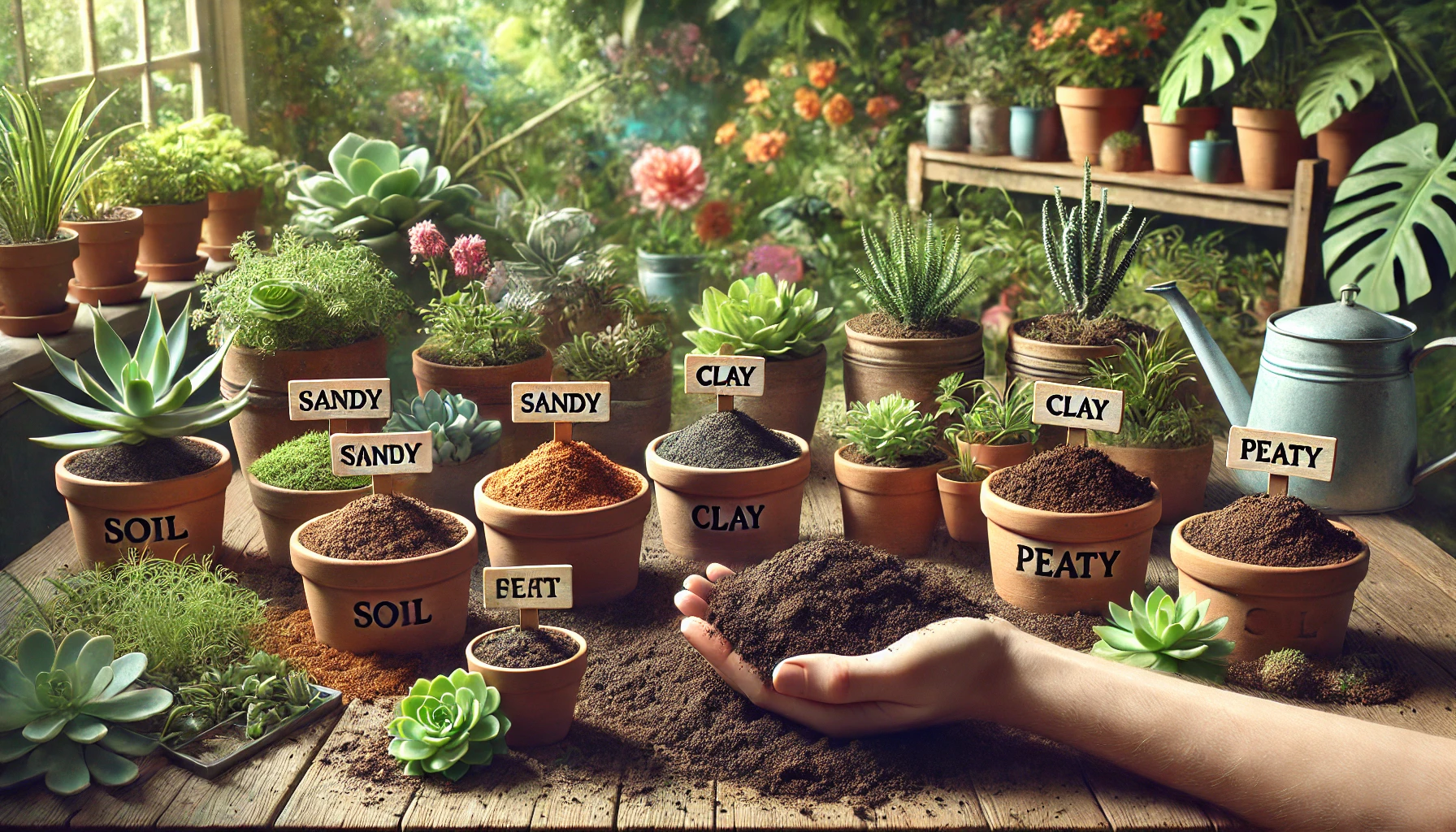Soil is one of the most important factors in plant health. Choosing the right type of soil ensures proper root development, nutrient absorption, and overall plant growth. Whether you are growing flowers, vegetables, herbs, or houseplants, understanding soil types and their properties will help you achieve better results. This guide will help you choose the best soil for different types of plants.
1. Understanding Soil Types
There are several types of soil, each with unique characteristics that affect plant growth.
Clay Soil
- Characteristics: Dense, holds water well, but drains poorly.
- Best for: Perennials, shrubs, and trees like willows and dogwoods.
- Improvement Tips: Add compost and sand to improve drainage.
Sandy Soil
- Characteristics: Drains quickly, low in nutrients.
- Best for: Succulents, cacti, and Mediterranean herbs like rosemary and thyme.
- Improvement Tips: Mix in organic matter to retain moisture and nutrients.
Loamy Soil (Ideal for Most Plants)
- Characteristics: Balanced mix of sand, silt, and clay, rich in nutrients.
- Best for: Vegetables, flowers, and fruit plants.
- Improvement Tips: Maintain with compost to keep fertility high.
Peaty Soil
- Characteristics: High in organic matter, retains moisture well.
- Best for: Acid-loving plants like blueberries and azaleas.
- Improvement Tips: Mix with sand for better drainage.
2. Choosing Soil for Different Types of Plants
Houseplants
- Best Soil: Light, well-draining potting mix with perlite or vermiculite.
- Tips: Avoid using garden soil in pots, as it can compact and block drainage.
Vegetables and Herbs
- Best Soil: Loamy soil rich in organic matter.
- Tips: Add compost or aged manure to maintain nutrients.
Succulents and Cacti
- Best Soil: Sandy, well-draining soil with added perlite.
- Tips: Avoid overwatering to prevent root rot.
Flowering Plants
- Best Soil: Loamy, nutrient-rich soil with good drainage.
- Tips: Use mulch to retain moisture and regulate temperature.
Acid-Loving Plants (Blueberries, Hydrangeas, Azaleas)
- Best Soil: Peaty, slightly acidic soil (pH 5.0-6.0).
- Tips: Add pine needles or peat moss to lower soil pH.
3. How to Improve Soil Quality
- Add compost: Enriches soil with nutrients and improves texture.
- Use mulch: Helps retain moisture and prevents erosion.
- Test soil pH: Adjust with lime (to increase pH) or sulfur (to decrease pH).
- Rotate crops: Prevents nutrient depletion in vegetable gardens.
